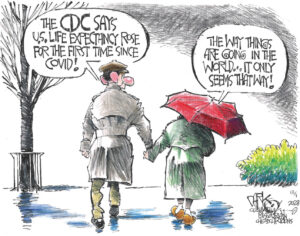CDC Study Finds 1 in 5 U.S. Women Have Been Victims of Rape and That’s Not Even the Scariest Part
A report recently published by the Centers for Disease Control and Prevention found that more than 23 million women and about 2 million men in the United States had been raped at some point during their lives. But other numbers in the findings are perhaps even more frightening. Nearly 2 million American women were raped in the year before taking the CDC's 2011 National Intimate Partner and Sexual Violence Survey. Shutterstock
Nearly 2 million American women were raped in the year before taking the CDC's 2011 National Intimate Partner and Sexual Violence Survey. Shutterstock
A report recently published by the Centers for Disease Control and Prevention, which used data collected in 2011, found that more than 23 million women and about 2 million men in the United States had been raped at some point during their lives. Perhaps more frightening are the statistics that “the majority of victims of all types of sexual violence knew their perpetrators” and that a whopping 43.9 percent of women have experienced some form of sexual violence other than rape.
Who can dare say now that rape is not a national epidemic that needs to be urgently addressed?
Centers for Disease Control and Prevention:
A substantial proportion of U.S. female and male adults have experienced some form of sexual violence, stalking, or intimate partner violence at least once during their lifetimes, and the sex of perpetrators varied by the specific form of violence examined. In addition, a substantial number of U.S. adults experienced sexual violence, stalking, or intimate partner violence during the 12 months preceding the 2011 survey. Consistent with previous studies, the overall pattern of results suggest that women, in particular, are heavily impacted over their lifetime. However, the results also indicate that many men experience sexual violence, stalking, and, in particular, physical violence by an intimate partner. Because of the broad range of short- and long-term consequences known to be associated with these forms of violence, the public health burden of sexual violence, stalking, and intimate partner violence is substantial. Results suggest that these forms of violence frequently are experienced at an early age because a majority of victims experienced their first victimization before age 25 years, with a substantial proportion experiencing victimization in childhood or adolescence.
…Because a substantial proportion of sexual violence, stalking, and intimate partner violence is experienced at a young age, primary prevention of these forms of violence must begin early. Prevention efforts should take into consideration that female sexual violence and stalking victimization is perpetrated predominately by men and that a substantial proportion of male sexual violence and stalking victimization (including rape, unwanted sexual contact, noncontact unwanted sexual experiences, and stalking) also is perpetrated by men. CDC seeks to prevent these forms of violence with strategies that address known risk factors for perpetration and by changing social norms and behaviors by using bystander and other prevention strategies. In addition, primary prevention of intimate partner violence is focused on the promotion of healthy relationship behaviors and other protective factors, with the goal of helping adolescents develop these positive behaviors before their first relationships. The early promotion of healthy relationships while behaviors are still relatively modifiable makes it more likely that young persons can avoid violence in their relationships.
—Posted by Natasha Hakimi Zapata
Your support matters…Independent journalism is under threat and overshadowed by heavily funded mainstream media.
You can help level the playing field. Become a member.
Your tax-deductible contribution keeps us digging beneath the headlines to give you thought-provoking, investigative reporting and analysis that unearths what's really happening- without compromise.
Give today to support our courageous, independent journalists.






You need to be a supporter to comment.
There are currently no responses to this article.
Be the first to respond.